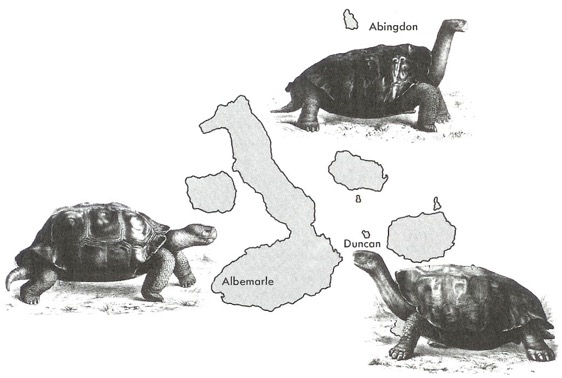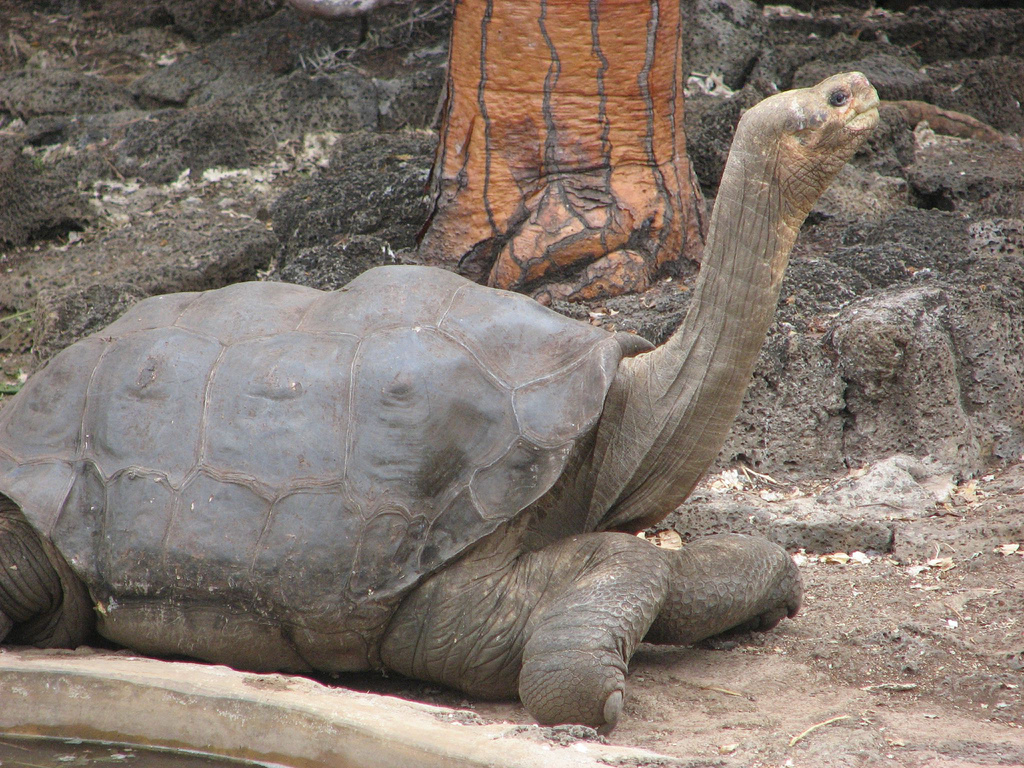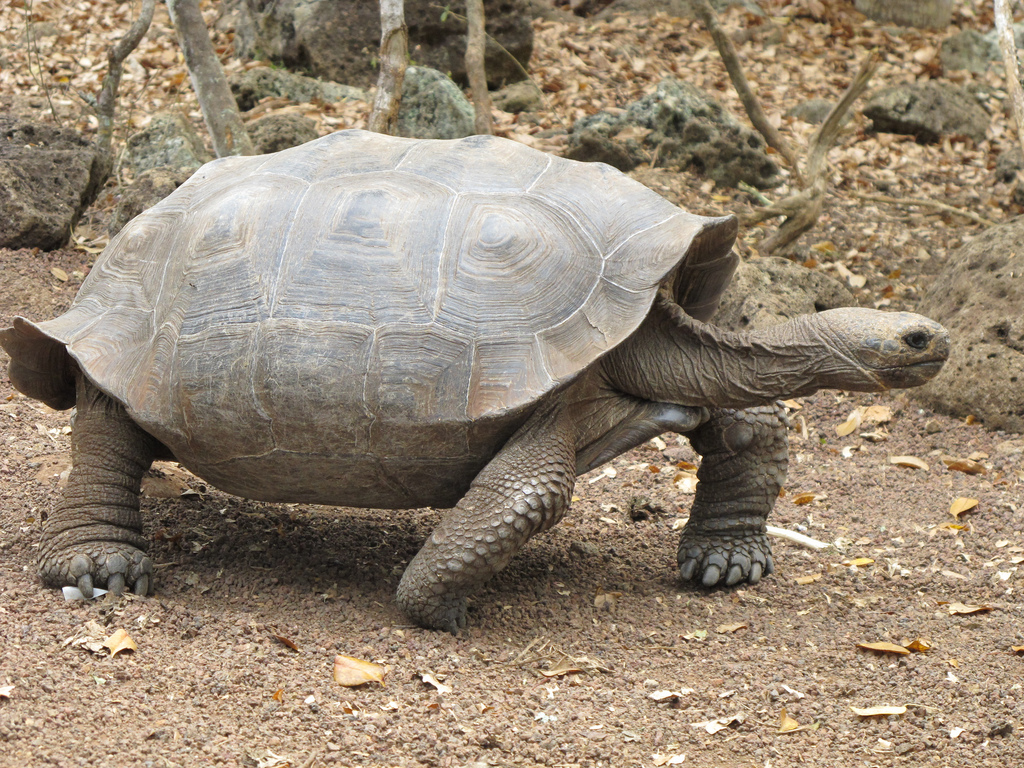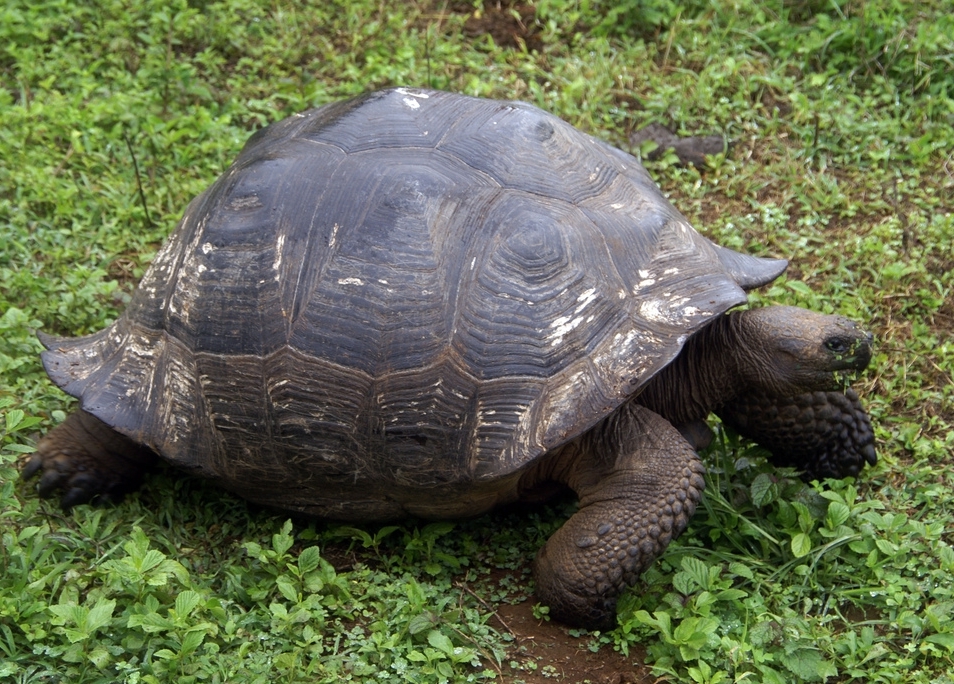
Variation in shell morphology of Galapagos Tortoises (Chelodonis spp)
Tortoises
on different islands of the Galapagos archipelago
differed widely in shell morphology, particularly with respect
to the curve of the back and the "saddle" above the neck. The Governor of the island told
Darwin that he could tell from which island any tortoise came,
according to the carapace. In the three examples shown above,
both the Abingdon and Duncan forms feed on cactus on dry
islands, whereas the Albemarle form feeds closer to the ground
on a wetter island.
"I have not as yet noticed by far the most remarkable feature in the natural history of this archipelago; it is, that the different islands to a considerable extent are inhabited by a different set of beings. My attention was first called to this fact by the Vice-Governor, Mr. Lawson, declaring that the tortoises differed from the different islands, and that he could with certainty tell from which island any one was brought ... The inhabitants, as I have said, state that they can distinguish the tortoises from the different islands; and that they differ not only in size, but in other characters. Captain Porter has described those from Charles and from the nearest island to it, namely, Hood Island, as having their shells in front thick and turned up like a Spanish saddle, while the tortoises from James Island are rounder, blacker, and have a better taste when cooked."



Chelodonis abingdonii,
C. chathamensis, & C. porteri"I have not as yet noticed by far the most remarkable feature in the natural history of this archipelago; it is, that the different islands to a considerable extent are inhabited by a different set of beings. My attention was first called to this fact by the Vice-Governor, Mr. Lawson, declaring that the tortoises differed from the different islands, and that he could with certainty tell from which island any one was brought ... The inhabitants, as I have said, state that they can distinguish the tortoises from the different islands; and that they differ not only in size, but in other characters. Captain Porter has described those from Charles and from the nearest island to it, namely, Hood Island, as having their shells in front thick and turned up like a Spanish saddle, while the tortoises from James Island are rounder, blacker, and have a better taste when cooked."



Text material © 2017 by Steven M. Carr